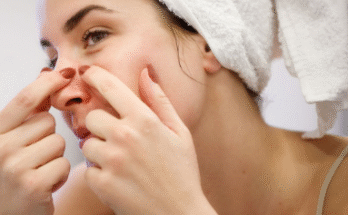For centuries, Aloe Vera has been celebrated as one of nature’s most versatile plants. From ancient Egypt to modern skincare routines, this soothing succulent has earned a lasting reputation for healing, moisturizing, and revitalizing the skin.
Among its many benefits, one of the most talked about today is its potential to help reduce acne and promote clearer, healthier-looking skin.
Acne is a common skin condition that affects people of all ages. It often appears when oil, dead skin cells, and bacteria clog the pores, leading to inflammation and breakouts. While many treatments exist, not all are gentle or suitable for sensitive skin.
This is where Aloe Vera stands out—it offers a natural, calming approach that works in harmony with the skin’s balance.
Aloe Vera’s anti-acne properties come primarily from its rich composition of vitamins, enzymes, and natural compounds. The gel found inside its leaves contains salicylic acid, sulfur, and several antioxidants, which contribute to its cleansing and healing effects. Salicylic acid, for instance, is known to gently exfoliate the skin, removing impurities that could lead to clogged pores. Sulfur helps reduce the bacteria that can worsen acne, while the plant’s antioxidants soothe irritation and redness.
Another reason Aloe Vera is highly valued in skincare is its remarkable hydration ability. Acne-prone skin often suffers from imbalance—many people try to dry out pimples with harsh products, which can trigger the skin to produce even more oil. Aloe Vera provides a solution to this problem by offering moisture without heaviness or grease. Its water-rich gel nourishes the skin deeply while allowing it to breathe, making it suitable for both oily and sensitive skin types.
One of Aloe Vera’s unique strengths is its anti-inflammatory action. When applied to irritated or inflamed skin, it provides a cooling sensation that helps reduce swelling and redness. This makes it particularly useful for calming active breakouts. Over time, regular use can also help minimize the appearance of acne marks, promoting a smoother, more even skin tone.
Using Aloe Vera for acne can be simple. The pure gel can be applied directly to clean skin as a lightweight moisturizer or a soothing mask. Some people choose to blend Aloe Vera with a few drops of tea tree oil or honey to enhance its purifying effects, but it is important to test any combination on a small patch of skin first to ensure compatibility. For those who prefer convenience, many skincare products now include Aloe Vera as a main ingredient—look for gels, creams, or toners that list it high on the ingredient label for best results.
Consistency is key when using Aloe Vera for acne management. It is not an instant cure, but a gentle, supportive aid that works best with regular use. Because it is natural and mild, it can be used daily without irritating the skin. With time, many people notice a reduction in breakouts, smoother texture, and a healthier glow.
Aside from its surface-level benefits, Aloe Vera also supports overall skin health. It helps maintain the skin’s natural barrier, protecting it from pollutants and environmental stressors that can worsen acne. Its vitamins—particularly A, C, and E—encourage cell renewal and repair, helping the skin recover from previous blemishes more effectively.
Incorporating Aloe Vera into your skincare routine can be a refreshing way to care for your skin naturally. Whether you harvest it directly from the plant or use a ready-made gel, this green remedy continues to prove that simplicity and nature often provide the most effective solutions. Gentle, soothing, and packed with skin-loving nutrients, Aloe Vera remains a timeless ally in the journey toward clearer, healthier skin.
Would you like me to make the article SEO-optimized (with keywords like “natural acne treatment” and “Aloe Vera for acne-prone skin”)? I can revise it for search-friendly phrasing while keeping it ad-safe.


